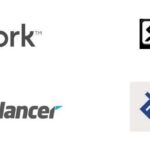The operational plan is generally the easiest section of the business plan to write. Generally, the operational plan consists of three large sections:
- Description of the Business
- List of Products and Services offered
- Administrative Strategy
Description of the Business
This is where you present your Business Model. Remember that a business model is a customer facing document. The Business Model Canvas is a valuable tool in coming up with your Unique Value Proposition (UVP) and is covered above.
This is also where you need to identify your economic model. An economic model is investor facing and looks at how the business is monetized.
The business description section should also list the leap of faith assumptions, any strategic partnerships from the Business Model Canvas, as well as the business’s strengths, weaknesses, opportunities, and threats, often called a SWOT analysis.
List of Products and Services Offered
This section of the operational plan is just what it sounds like.
If you are the manufacturer and/or wholesale distributor of a product, you would describe your product. You will want to include a description of your manufacturing process if applicable. Also, you will need to include information on suppliers and the availability of raw materials.
If you are a retailer, this is where you would describe the products you sell. Be sure to include information about your sources and how you plan to handle inventory as well as your order fulfillment strategy.
If you provide a service, this is where you would describe the services that the business provides.
If you are not clear about the business’s Unique Value Proposition (UVP), it is recommended that you consider developing a Business Model Canvas. I have developed a variety of ways you can learn more about the business model canvas if you are unfamiliar with it. Here are some you can choose from:
- Download the eBook or paperback from Amazon. Most extensive source of content (Small Fee)
- Watch a video presentation of a recorded workshop with supplemental content (Small Fee)
- Listen to the audiobook version (Free)
- Listen to Audiobook version on Audible.com (requires subscription)
- Listen to a podcast of a Business Model Canvas workshop(Free)
- Explore all the posts one by one in the database (Free)
I have also created a business model canvas tool that uses PowerPoint to help you develop your own business model canvas online. You can download the tool by clicking on the following link:
As the Business Model Canvas teaches you, if are going to be selling a product, you may want to consider some form of horizontal segmentation to find a new and uncontested market.
Administrative Strategy
As was the case with the Financial Plan and Marketing Plan sections above, much of the content around Administration Strategy are contained in the Operational Aspects subsection of the Pre-start section of the navigator. Rather than duplicate that same information here, the following link will open a new tab that will take you directly to the Operational Aspects section for you to review. When done, you can simply close that tab and resume the discussion in this section.

Operational Aspects
While the above sections cover much of the content associated with the operational plan, the following posts will serve to further enhance your operational plan’s content.
One key aspect of an operational plan is the leadership.
The perception of markets that accompany the introduction of a new technology follows a predictable cycle known as the Gartner Hyper Cycle. Businesses need to understand this cycle so they can plan accordingly.
As a small business, your greatest advantage over larger competitors is your speed and flexibility. It is never a good idea to compete head to head with a competitor that is larger, better funded, and has more resources than you. It is far better to employ what I call the underdog strategy to attack them where they are most vulnerable.
Since many small businesses are started by people with technical skills and limited business acumen, it is important to locate sources that will teach the founder about the business side of their industry. When it comes to learning the ins and outs of a specific business sector, there is often no better way than to become a member of a trade association.
Locations with high auto traffic counts are often used to justify a location for a business. However, it is not vehicular traffic that counts but the human traffic that is much more important.
When it comes to corporations that issue stock and have shareholders, the business must follow a strict management structure.
Entrepreneurs need to understand that they do not always have to have all the answers. There are people that can help.
While the physical act of creating a new entity is simple and can be accomplished on the Secretary of State’s website often in minutes, there are many formation errors that founders commit after the fact. These errors can easily be avoided so long as the founder is aware of some common formation error.
Expanding on the concept of an entity, many founders think about forming a non-profit to avoid paying income taxes. They simply assume that if they are helping others, they can avoid paying income taxes by requesting non-profit status from the IRS. However, there is much more than just taxes to consider before going the non-profit route.
When it comes to management and personnel, freelancers and businesses with only one founder require the owner to be a jack of all trades, meaning they are the masters of none. Businesses with multiple founders are generally more successful in the long run because each partner is an expert in different disciplines. While few senior founders are not willing to give up large chunks of equity to other shareholders, and therefore attract poor partners, or are trying to avoid conflict by creating equal share ownership, there are much better ways to allocate equity to partners.
Speaking of experts, there is an option that can aid in your success, especially when you are the only founder. Today, many small businesses no longer rely on full-time employees and instead, hire subcontracts/freelancers to perform specific jobs. I, for one, have freelance experts that edit my work, assist me with social media, design, and code development. Each freelancer is an expert in their specific field and as the founder, I act as an orchestra leader, making sure they all sing from the same sheet of music.
Keeping on top of a world that is rapidly changing can be tough, but as a small business, you can react to these changed faster than larger corporations. This is one reason that so many small businesses are on the cutting edge of technology and acquired by larger companies. At its core, founders of startups with less bureaucracy are free to think differently than employees of larger companies. Today, with Artificial Intelligence (AI) and the Internet of Things (IoT) shaping the way we interface with technology, the emphasis on a worker’s Intelligence Quotient (IQ), a long-standing measure of corporate employees, is shifting to workers with higher Emotional Intelligence (EQ) that are found in startups.
Many nascent entrepreneurs have technical skills but lack the adequate business acumen to understand the true financial aspects of running a successful business. They simply look at a business and think that the owner is taking huge profits and as a result, feel they can jump in and start a business while charging less. Unfortunately, many of these new business owners will learn the hard way that being a low-cost provider has many more issues than just lower margins.
Icons made by Good Ware from www.flaticon.com is licensed by CC 3.0 BY















